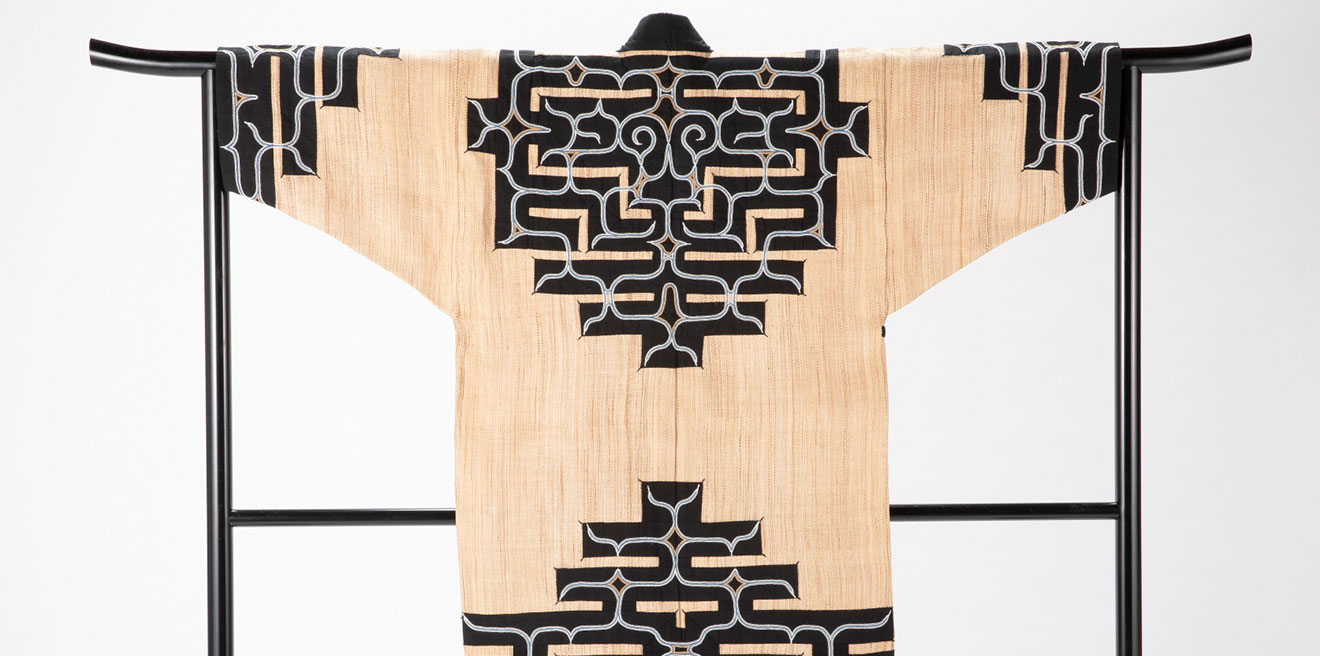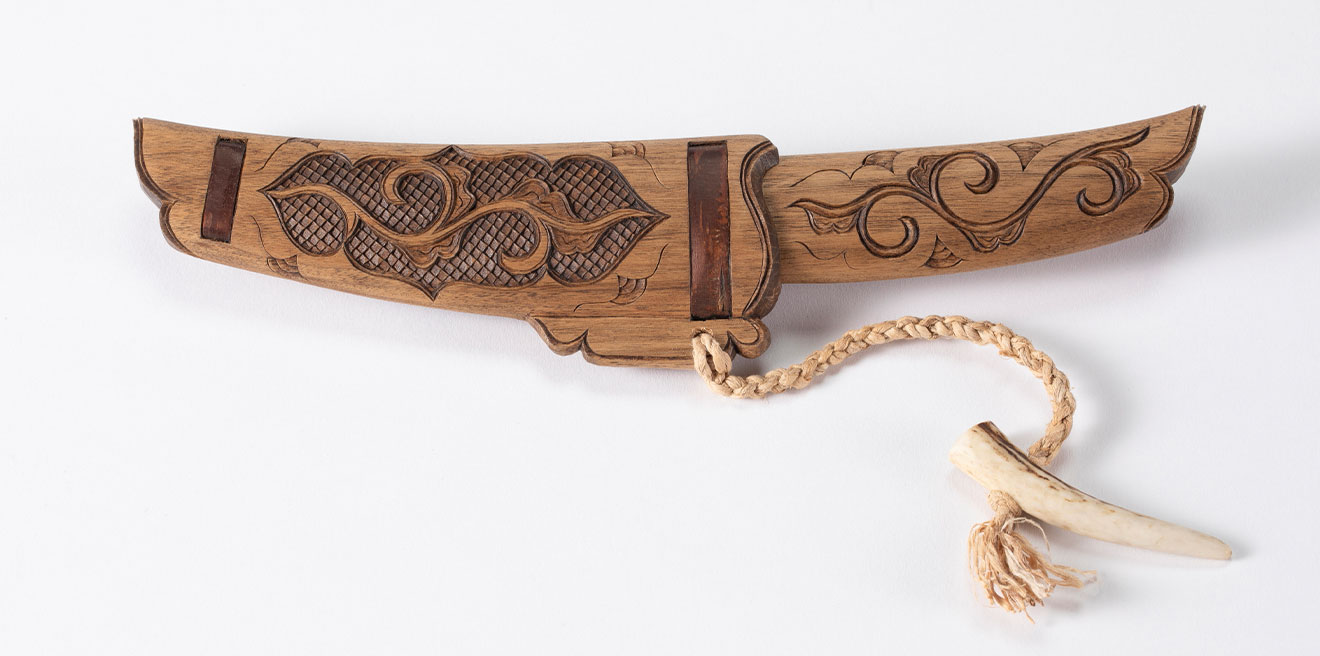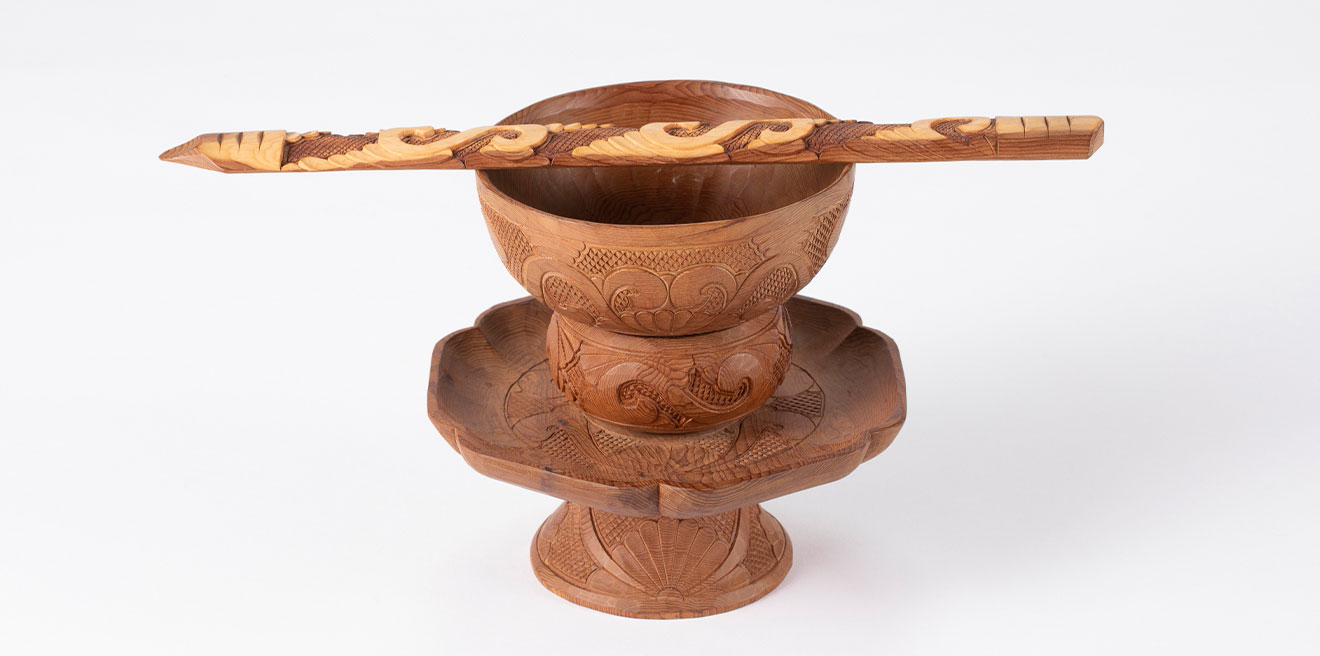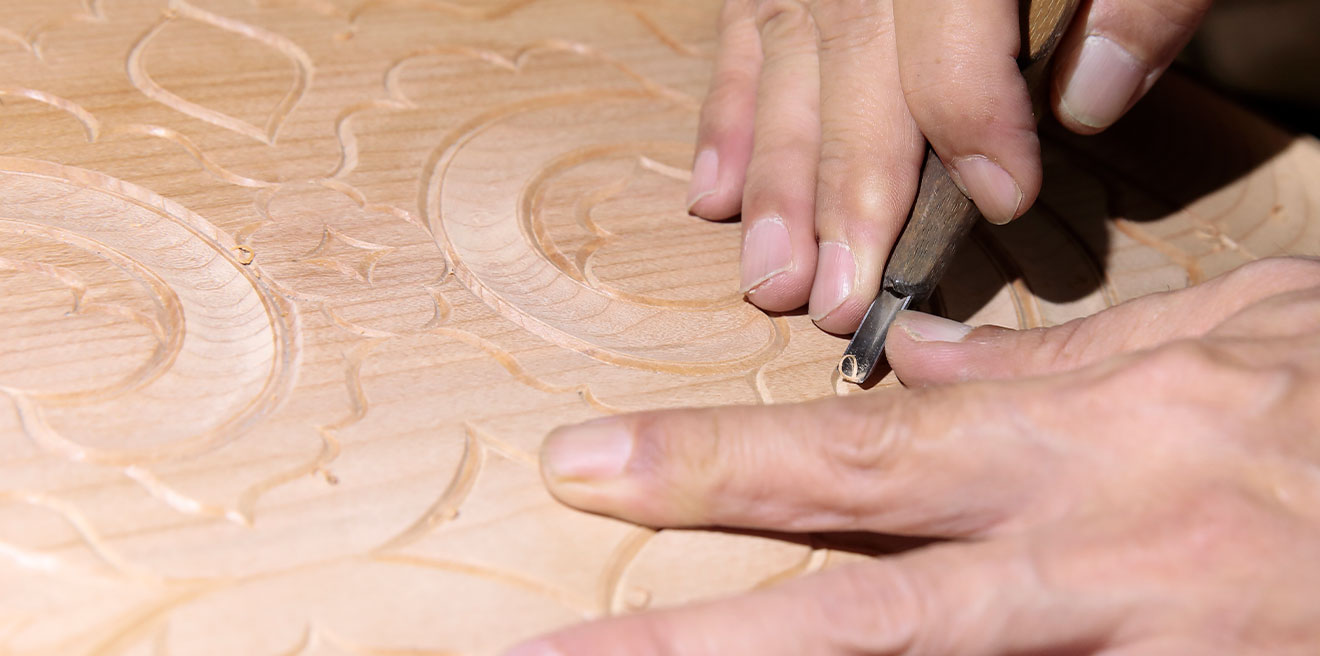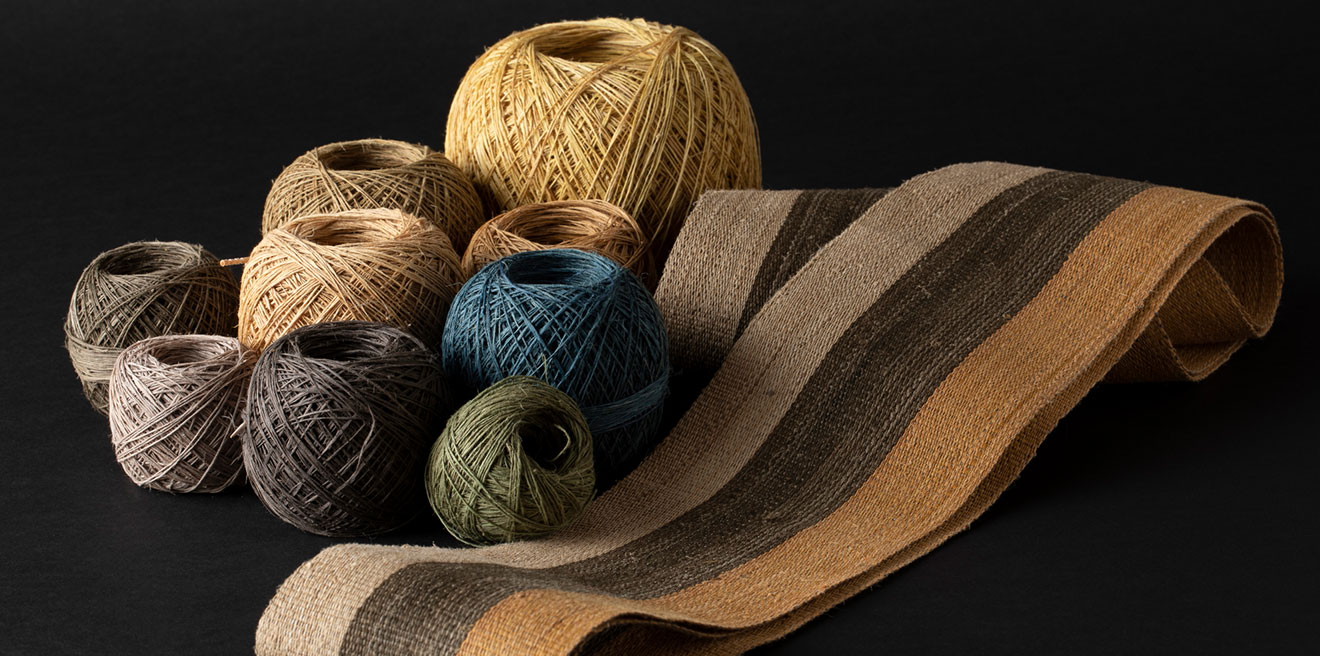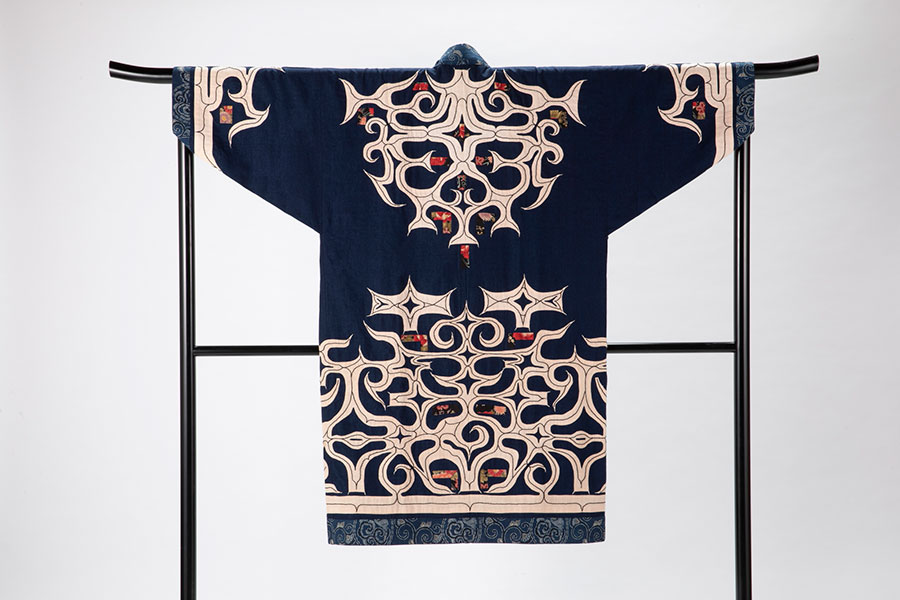
In the past, embroidering was considered women’s work, and expressed patterns different from those used in woodcarving. These techniques are said to have further developed after the 19th century, when cotton cloth and threads became more common, and with them more intricate and elegant patterns, particularly morew-noka (spirals) were applied.
These developments can be seen in the cikarkarpe, a traditional garment made of black or navy blue fabric cut into strips and sewn into a pattern, with other patterns embroidered over the top, sometimes in designs like brush strokes used in writing.
There are many other embroidered garments, like attusamip or kaparamip, or small fabric items like matanpus headbands, and men’s accessories in particular often bear striking designs.
This is due to the belief that women sewers were working a prayer for the safe return of the men into the design as they embroidered.
There is also a belief in Ainu culture that demons can enter the body through openings, and so embroidered patterns on cuffs, hems, the back, etc. are said to help repel evil.
